According to statistics, more than a billion people are infected with helminths, popularly called worms. However, these indicators are conditional, since they were determined based on the number of people who sought help from specialists who were diagnosed with helminthic infestation.
In life, every person encounters worms at least once in his life (regardless of age and gender), but many are simply unaware of their infection and continue to transmit the worms to other people. In the initial stages of infection they do not cause any symptoms, but in a mass infestation they can cause toxic poisoning and even death. Therefore, you should know what worms are, what they look like in the body and how to overcome the acquired disease.
Doctors have already examined many "uninvited guests" in the bodies of animals and humans that can overload the immune system and make holes in blood vessels by gnawing. This has serious consequences in the form of erosions and other diseases, which is why helminth infestation must first be treated.
Types of worms
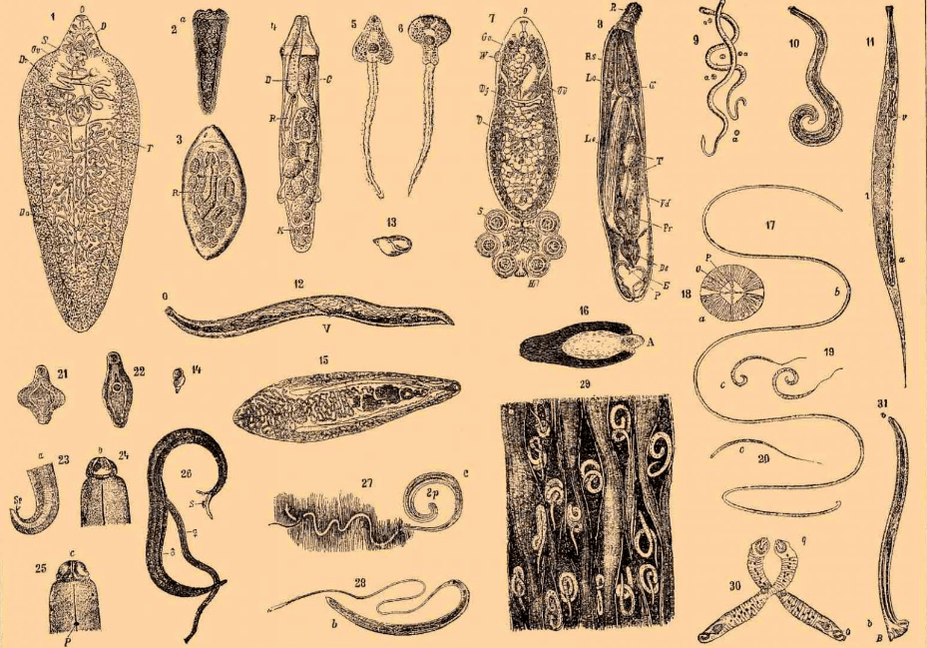
Among the numerous types of helminths, three types of worms can cause the greatest harm to the body: leeches, roundworms and tapeworms. Let's look at what these worms look like in humans.
Roundworms
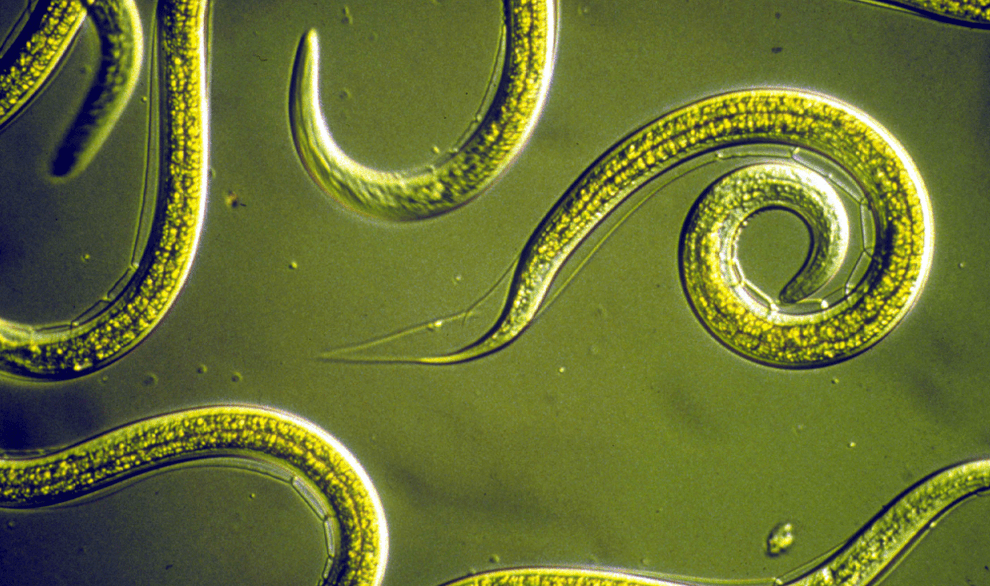
The class of roundworms is commonly referred to as nematodes. This is one of the most common types of worms that affect the human body. However, in addition to parasitic nematodes, there are also free-living nematodes that do not occur in the human body.
In the photo you can see the body of the nematode, which is characterized by a round shape and is therefore classified as a roundworm. They have a thin and elongated body and its ends are pointed on both sides.
When examined, the following worms of this class are most often found in the human body: whipworm, roundworm, trichine (Trichinella) and pinworm. These types of worms in humans can be seen in the photo.
Male roundwormshave a shorter body length than females. Females can grow up to 40 centimeters tall. Roundworms are localized in the intestines and poison the body with toxic substances. If a large accumulation of parasites accumulates in this cavity, they can close the intestinal lumen and impede its patency. If you refuse treatment, the invasion can lead to death, since unnecessary substances in the body are no longer excreted and toxic poisoning reaches its limits.
PinwormsCompared to roundworms, they bark smaller. Their body length is no more than 1 cm. These representatives reproduce actively, as they live in the small intestine and rectum and have access to the anus. The females crawl out of this and lay larvae on the intrafemoral part, the anus. between the buttocks. A single pinworm can lay up to 15, 000 eggs at a time, causing skin irritation. Then the infected person begins to scratch the irritant, which contributes to the spread of helminths to others. Pinworms most often appear in children, so preschool and school institutions, as well as institutions with large gatherings of people, need to be checked for worm eggs.
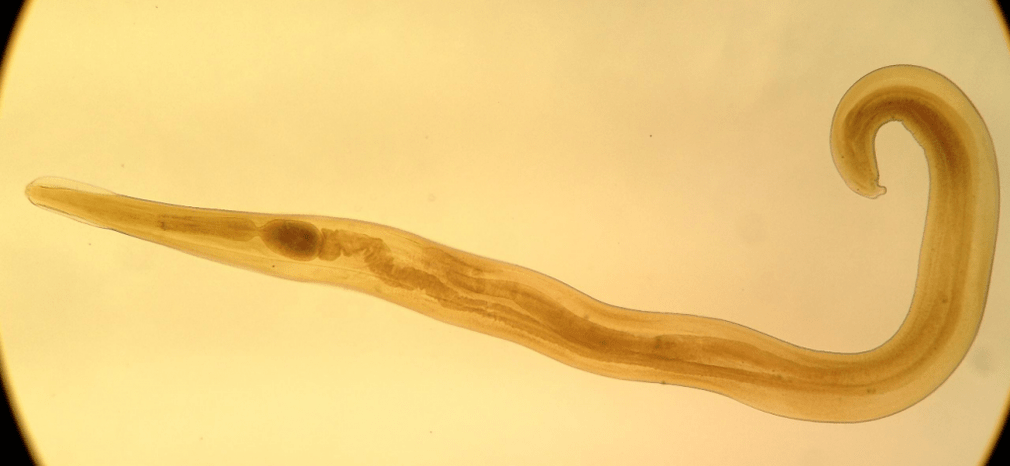
Whipwormis an equally dangerous parasite, because the females of this helminth lay 3, 000-4 per day. 000 eggs. When the worm reaches sexual maturity, it has a thread-like front end, which is 2/3 of the body length, and a thick rear end of gray-pink color with transverse stripes. The average length of a helminth is 3-5 cm. The tail of female and male representatives differs: in females it is characterized by a bend, in males it is spiral-shaped.
The danger of infection with whipworm is that this worm penetrates the mucous membrane and deep layers. Can affect smooth muscle and feed on tissue fluid.
Trichinais a particularly dangerous parasite that lives in the muscles and intestinal walls of humans. Visually, the worm looks like a long, twisted thread with a diameter of 4. 5 mm and 1. 6 mm. The vital activity of such a helminth can lead to the death of the carrier if timely therapeutic measures are not taken.
Leeches
.png)
Many people are interested in what parasites in the human body (photo) of the Fluke class look like. In medical practice they are called trematodes, but the most interesting thing is that they do not suck anything from the body, but feed on mucus, blood and what worms pass through the affected area. Trematodes can grow up to 1. 5 meters long and are found not only in the intestines, but also in other organs (even the conjunctival sac).
However, worms of the fluke class can adhere to the intestinal walls and thus resist accidental excretion in the feces. These parasites have a functioning digestive tract and reproductive system, but the respiratory and circulatory systems function minimally.
Tapeworms
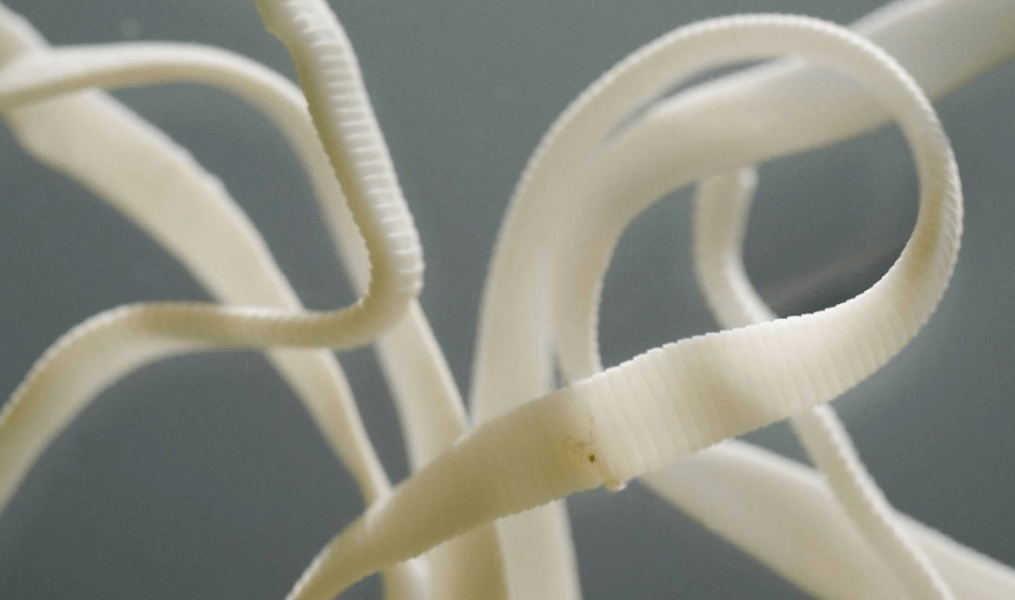
Tapeworms- a class of flatworms, which is divided into tapeworms and tapeworms. These individuals rarely enter the human body directly. Most often, infection with them occurs when a person eats fish infected with these parasites. However, in animals they only appear in the larval stage and reach maturity in an individual that has a backbone.
Parasites of this class have a special anatomical structure of the body, so the head of the worm serves only to attach to the intestinal wall, and this worm is fed throughout the entire body. The food of their host serves as food for tapeworms, but the helminth is not digested by gastric juice, because releases a substance called antikinase.
Despite the similarity of these worms, when diagnosing them, it is imperative to distinguish them in order to determine the correct method of treatment.
Tapeworms have 2 suction cups on their heads, which allow them to securely attach to the intestinal wall, in contrast to their representatives - tapeworms, which have 4 adhesive teeth. The body length of the tapeworm can be up to 18 meters and can occupy the entire length of the small intestine.
How can you become infected with these worms?

The spread of helminths begins with phase 1, which is characterized by the penetration of helminth eggs into the human body. They then hatch, become larvae (phase 2), and move through the body until they become lodged in organs or systems. However, most of the time they remain in the intestines. In phase 3, worms are no longer able to travel through the body, but are still able to reproduce and infect a healthy population.
Despite the diversity of worms and their characteristics, a combined infestation can occur. This suggests the possibility that different types of worms reside in the digestive tract or organs at the same time without affecting each other.
Infection with worms can occur in three ways:
- From human to human.
- Through the floor.
- When following a raw food diet and eating poorly processed foods, especially vegetables and fruits, herbs.
Signs of infection
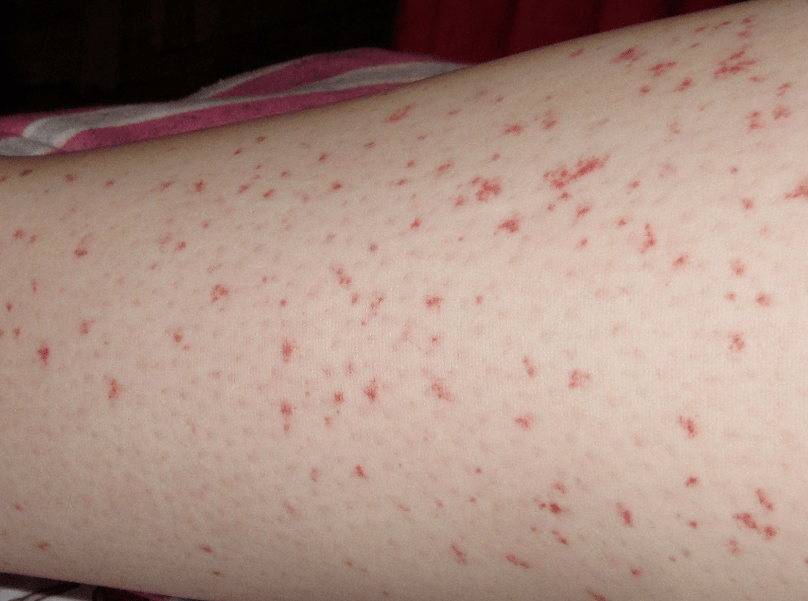
The signs of a helminth infection can be very different, but you should first start at the stage of infection:
- Acute. Will not last longer than 20 days. In this case, extensive allergic reactions of unknown cause are observed. This is due to the immune system's response to a stimulus. The allergy causes a rash and clinical blood tests show higher than normal levels of eosinophils.
- Acquired. The disease can develop at this stage over a period of 2-3 years. In this case, the symptoms depend on which organ the parasites live in, how many they are and how much damage they have done to the tissue walls or body systems. In the worst case, they cause inflammation and fast-growing species can have fatal consequences.
It is very important to know what parasites of any kind look like, as dead adults can sometimes be passed in feces. Then, based on the description of their appearance, you can speed up the diagnosis and quickly select a treatment method.
Timely detection of helminths plays an important role in human life, since not all parasites can exist in the body practically harmlessly. It is recommended that the whole family be examined by a doctor at least 1-2 times a year, wash their hands before eating, eat only well-processed foods and use folk anthelmintics for prevention: clove or wormwood powder, walnut shells-Tincture.








































